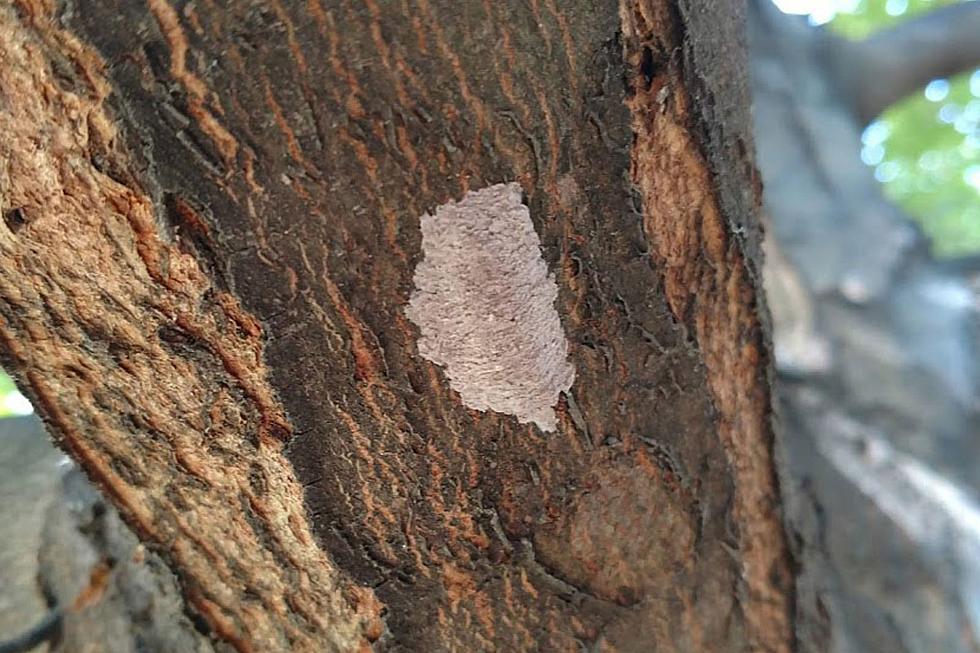
Remove These Masses Growing on Your Indiana Property ASAP
Be on the lookout for these masses growing all over your property because they happen to be eggs for an invasive insect species in Indiana.
We have heard a lot about invasive plants and insects in Indiana recently. Everything from a mussel species to Poison Hemlock has been talked about taking over Indiana, and those are just examples. There are a lot of other invasive species out there that are invading the area. Another invasive insect that has been recently talked about is the spotted lanternfly. If you spot it, you are given full permission to kill it. This time of year, you might find their eggs before they hatch. That's what you need to be on the lookout for now.

Spotted Lanternfly Spotted In Indiana
In 2021 the Indiana DNR reported the first spotted lanternfly (Lycorma delicatula) found in Indiana in Switzerland County, More recently, in 2022, the insect was found in the Huntington area in northern Indiana according to the Courier & Press. These invasive insects have been spotted more times than they have probably been reported in Indiana.
How To Spot A Spotted Lanternfly
The immature stage of a Spotted Lanternfly often appears black with white spots, and they develop red patches as they mature. As an adult, the Spotted Lanternfly is about one inch long and half an inch wide, with tan, semi-transparent forewings, black spots, patches of red and black and a white band, and a yellow and black abdomen.
Why Should You Kill These Insects?
Indiana DNR asks that if you see one of these insects, you should kill it. That may sound pretty harsh, especially since they are harmless to humans. So why should you kill them?
The USDA National Invasive Species Information Center says it poses a "serious economic threat to multiple U.S. industries." These insects feed on agricultural crops like grapes, apples, hops. They also feed on maple, walnut, and willow trees.
According to Indiana DNR:
<p>Nymphs emerge in April or May and have four instars or growth stages. The first three instars are black with white spots. The fourth instar retains the white spots but has a red and black body with red wing pads. The first to fourth instar ranges in size from a 1/8 of an inch to a little over a half inch long.</p><p>The nymphs will climb into trees shortly after they emerge. They will drop off the trees when they encounter a physical obstacle or disturbance from the wind and start climbing up again. Fourth instar nymphs develop into adults in late June or early July. Adults continue to feed on plant tissues. Mating and egg deposition begin in September and continue until a hard frost.</p>
While the freezing temperatures will kill off adult insects, the egg masses they lay in fall can be spotted throughout the winter. That means you could spot them in your yard right now. Egg masses tend to be about 1.5 inches long and resemble mud that has dried and cracked. Spotted lanternfly overwinters as an egg on the bark of trees, firewood, rocks, outdoor furniture, equipment, vehicles, or anything that is stored outside.
How to Remove Lanternfly Egg Masses
According to the U.S. Department of Agriculture, "scrape any egg masses into a plastic zippered bag filled with hand sanitizer, then zip the bag shut and dispose of it properly." The Indiana DNR asks that you also report any findings to them by calling 866-NO EXOTIC ((866) 663-9684), or emailing the DNR Division of Entomology & Plant Pathology(DEPP) at DEPP@dnr.IN.gov. Be sure to include the county you live in (or where you spotted the flies and/or eggs) and your contact information so DEPP staff can follow up.
[Sources: Indiana DNR / USDA]
7 Invasive Insects in Indiana You Should Kill Immediately If You See Them
Gallery Credit: Ryan O'Bryan
Animals You Might Encounter in The Wild in Indiana
Gallery Credit: Kat Mykals
LOOK: Biggest snowfalls recorded in Indiana history
Gallery Credit: Stacker
More From WKDQ-FM









